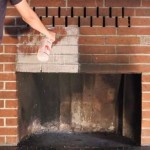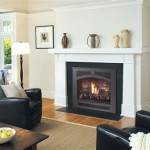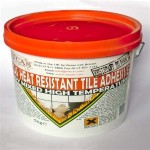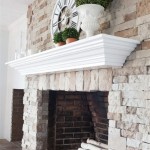Smoke Coming Out Of Fireplace: Causes and Solutions
Seeing smoke billowing from your fireplace instead of a cheerful, dancing flame can be a frustrating and even concerning experience. While a small amount of smoke is normal during the initial fire-starting phase, persistent smoke can indicate issues with your fireplace or chimney, potentially affecting safety and comfort. Understanding the common causes of smoke coming out into the room can help homeowners pinpoint the problem and take appropriate action.
1. Improper Fireplace Installation or Design
The foundation of a smoke-free fireplace lies in its proper installation and design. A poorly designed or installed fireplace can hinder the natural upward draft that effectively draws smoke up the chimney. This can lead to smoke spilling out into the room, creating a smoky environment and even potentially causing health problems.
For example, a fireplace that is too close to the roof line can lead to a weak draft due to wind turbulence. Similarly, a chimney that is too short or has a narrow flue can also impede the flow of smoke. Additionally, the fireplace throat, the opening at the top of the firebox, should be properly sized to prevent smoke from spilling over. An incorrectly installed fireplace damper can also block the chimney opening, hindering the draft and allowing smoke to back up.
2. Obstructions and Blockages in the Chimney
Over time, chimneys can become clogged with debris such as bird nests, leaves, animal droppings, or even creosote buildup. These obstructions can significantly reduce the chimney's efficiency, leading to smoke backdrafting into the house. Creosote, a highly flammable tar-like substance, accumulates when wood doesn't burn completely and is particularly dangerous due to its fire hazard.
Regular chimney inspections and cleaning are crucial to prevent these obstructions from developing. Chimney sweeps can effectively remove any debris and creosote buildup, ensuring smooth airflow and a safe operating environment for your fireplace. Furthermore, installing chimney caps or screens can help prevent debris from entering the chimney in the first place.
3. Inadequate Draft
A strong draft is essential for drawing smoke up the chimney and preventing it from entering the room. A weak or nonexistent draft can be caused by various factors, including weather conditions, chimney design, or even neighboring buildings. Wind direction can significantly impact draft, especially when the wind is blowing down the chimney, forcefully pushing smoke back into the fireplace.
While wind direction is beyond control, homeowners can address other draft-related issues. Ensuring a proper chimney height and a wide flue opening can improve the draft. Installing a chimney fan can supplement the natural draft, especially in areas with limited wind velocity. Additionally, checking the fireplace damper for proper functioning is crucial, as a closed damper can completely obstruct the chimney opening, hindering the flow of smoke.
4. Improper Burning Practices
The way you use your fireplace can significantly impact its performance and smoke production. Improper fuel, insufficient air supply, and poor fire management can lead to smoke entering the room.
Using damp or unseasoned wood can produce excessive smoke as it takes longer to burn. Allowing the fire to smolder, particularly with insufficient airflow, can generate more smoke and contribute to creosote buildup. Additionally, starting a fire with paper or other flammable materials can quickly reduce oxygen levels, leading to smoke production. Proper fire-starting techniques using kindling and gradually introducing larger logs can help minimize smoke and ensure an efficient fire.
Furthermore, ensuring adequate ventilation is crucial. Open windows and doors to allow fresh air to enter the room and promote a good draft. Maintaining a proper distance between the fire and fireplace throat is also important. Avoid overloading the fireplace with too much wood, as this can restrict airflow and cause smoke to backdraft.
5. Weather Conditions
Weather conditions, particularly wind direction and atmospheric pressure, can play a significant role in smoke production. Strong winds blowing down the chimney can create a backdraft, forcing smoke back into the room. Conversely, calm or light wind conditions might not provide enough pressure to draw smoke effectively.
While homeowners have limited control over weather conditions, understanding their impact can help them anticipate potential smoke issues. During windy days, consider limiting fire usage or adjusting the damper to control airflow. Be mindful of atmospheric pressure changes, as a sudden drop in pressure can lead to a weaker draft and increased smoke production.

7 Common Causes Of Dangerous Chimney Smoke Entering A Home

Two Important Things You Can Learn From A Smoking Chimney

If Sparks Are Coming From Your Chimney Call A Sweep Asap

Reduce Chimney Fireplace Pollution Sweep

Smokey House Due To Chimney Fire In Baltimore Chimneytek

Why Is My Fireplace Smoking Lackawanna County Pa Integrity Chimney

Blocked Flues Leaking Chimneys And Other Causes Of Smokey Fireplaces

Why Is My Fireplace Smoking Lackawanna County Pa Integrity Chimney

Why Your Fireplace Is Smoking How To Fix A Smokey

Common Causes Of Stove Smoking And How To Prevent It Direct Stoves
Related Posts








